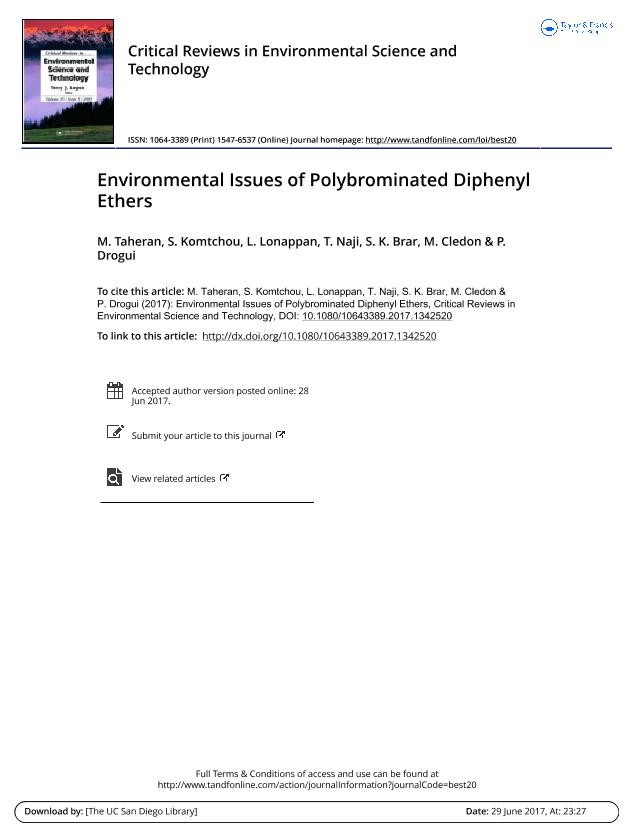Artículo
Environmental issues of Polybrominated Diphenyl Ethers
Taheran, M.; Komtchou, S.; Lonappan, L.; Naji, T.; Brar, Satinder Kaur; Cledón, Maximiliano ; Drogui, Patrick
; Drogui, Patrick
 ; Drogui, Patrick
; Drogui, Patrick
Fecha de publicación:
07/2017
Editorial:
Taylor & Francis
Revista:
Critical Reviews In Environmental Science And Technology
ISSN:
1064-3389
Idioma:
Inglés
Tipo de recurso:
Artículo publicado
Clasificación temática:
Resumen
Polybrominated diphenyl ethers (PBDEs) are among the emerging contaminants that have been traced in almost all environmental compartments for the past 30 years. Their continued application as flame-retardant additives, persistence in nature due to fluorine groups, global atmospheric transport, and analytical challenges due to interferences and different properties of congeners indicate the urgent need of finding solutions to their use. The increasing level of PBDEs in the environment and especially human tissues is alarming due to their potential neurological effects, cancer proliferation, and thyroid hormone imbalance. Therefore, strict regulations need to be applied in all countries to control the PBDEs production consumption and disposal into the environment. Studies have shown that conventional wastewater treatment plants are unable to degrade PBDEs resulting in the transport of 60–90% of PBDEs to soil through biosolids application. On the other hand, advanced treatment processes, such as ultraviolet light, advanced oxidation, and photocatalytic degradation showed promising potential for removing PBDEs from wastewater (70–100% degradation efficiency). PBDEs can be replaced by natural flame retardants, such as nanoclay or new polymers, such as bishydroxydeoxybenzoin which have no environmental or health problems compared to PBDEs.
Archivos asociados
Licencia
Identificadores
Colecciones
Articulos(SEDE CENTRAL)
Articulos de SEDE CENTRAL
Articulos de SEDE CENTRAL
Citación
Taheran, M.; Komtchou, S.; Lonappan, L.; Naji, T.; Brar, Satinder Kaur; et al.; Environmental issues of Polybrominated Diphenyl Ethers; Taylor & Francis; Critical Reviews In Environmental Science And Technology; 47; 13; 7-2017; 1107-1142
Compartir
Altmétricas



